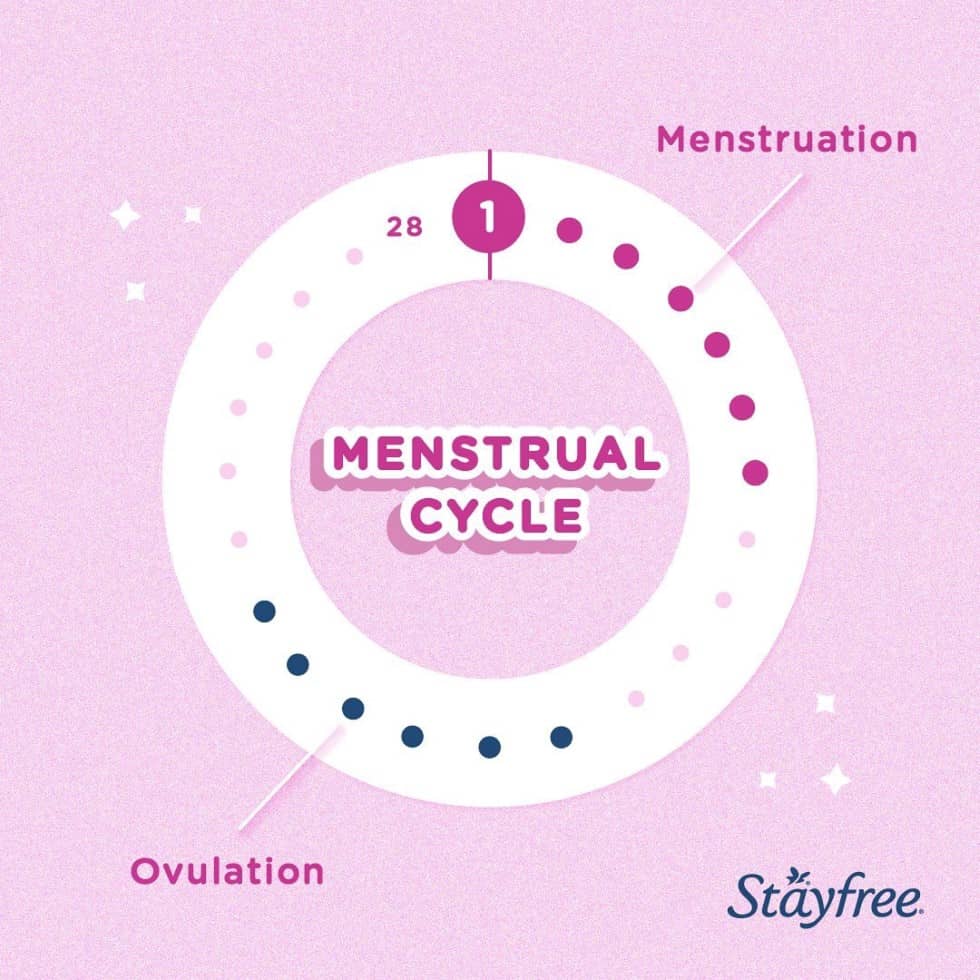Period Calculator

Figuring out when your next period will start often feels a lot more complicated than it really it. Cut down on surprises with our handy period calculator! Use this to help plan ahead for special occasions, vacations, or even ovulation if you’re trying to conceive. Just answer a few short questions and we will generate a customized calendar just for you.
Kindly note that the data entered through the calendar is not saved nor stored permanently and will be used and processed temporarily while you browse this page for the sole purpose for you to use this calendar. We kindly ask you not to share with us, either directly or indirectly, any information relating to sensitive and health data through this service. For more information, please refer to our Privacy Policy.
Why Use a Period Calculator?
On average, a woman’s menstrual cycle lasts 28 days, starting from the first day of menstruation. So, based on a sample 28-day menstrual cycle, ovulation would occur about 14 days before the next period begins. Every woman is different, though, and determining the exact date of ovulation cannot always be calculated according to this average estimation.
How does a Period Calculator Work?
A period calculator or period calendar is most useful for women, whose menstrual cycle is regular. The ovulation calculator works by simply entering the first day of your last menstrual period and the length of this cycle. Once this information is entered into the ovulation calculator, you will see your approximate day of ovulation and the days when you are most likely to get pregnant.
Understand Your Fertile Days
The fertility period, that is to say, is the most favourable time to conceive. This phase is spread over five days on average (four or five days before the date of ovulation and one or two days later). Here again, it remains theoretical. A woman may sometimes become pregnant outside the fertile period too, which can be triggered at an unexpected date. This is known as spontaneous ovulation.
Calculate your Estimated Period Date
The length of the menstrual cycle varies from one woman to another. Some women have a regular 28-day cycle, while for others, it can be shorter or longer. By subtracting 14 days from the number of days in your cycle, you will get a clearer idea of when you ovulate:
- If your cycle is 28 days, ovulation should occur on the 14th day from the first day of menstruation
- If it is longer, such as 32 days, ovulation will take place on the 18th day from the first day of menstruation
- If your cycle varies from one month to another, it gets more difficult to determine exactly when you’ll be ovulating
There are other methods rather than counting days, which help determine the date of ovulation.
Three Methods to Determine the Ovulation Date:
- The temperature curve: Keep a chart and record your temperature every morning when you wake up, before getting out of bed or even moving around or eating anything. Usually, your temperature will vary between 36 and 36.5 degrees Celsius from the first day of menstruation until the date of ovulation and then after that, it would slightly rise to about 37 to 37.2 degrees Celsius and remain constant until the following period occurs. The time of ovulation is positioned just before the temperature increases; so, for the first month, you know the ovulation date after it has occurred. By keeping track of your temperature for several months, you will be able to determine an average and estimate the date of ovulation in the next cycle
- Cervical mucus: Testing your cervical mucus is an important fertility indicator. Mucus is the liquid that comes from your cervix. Because its texture varies throughout the cycle, you can use it to help to determine when you ovulate. After your period, it is white and creamy. Towards ovulation, it will become more watery and transparent, similar to egg white. After ovulation, the amount of discharge decreases, it gets sticky again, and doesn't stretch well
- The LH peak: At the time of ovulation, the luteinizing hormone, which is a hormone found in both men and women, is at its peak and triggers ovulation. You can measure the LH level in your urine at home, using an ovulation test kit found at a local pharmacy
References:
Please note that STAYFREE® makes no warranty concerning the calculations. The calculation of your ovulation cycle according to this ovulation calendar is based on assumptions and actual ovulation will vary for each woman.
*Originally published on https://www.carefreearabia.com/en/period-calculator
